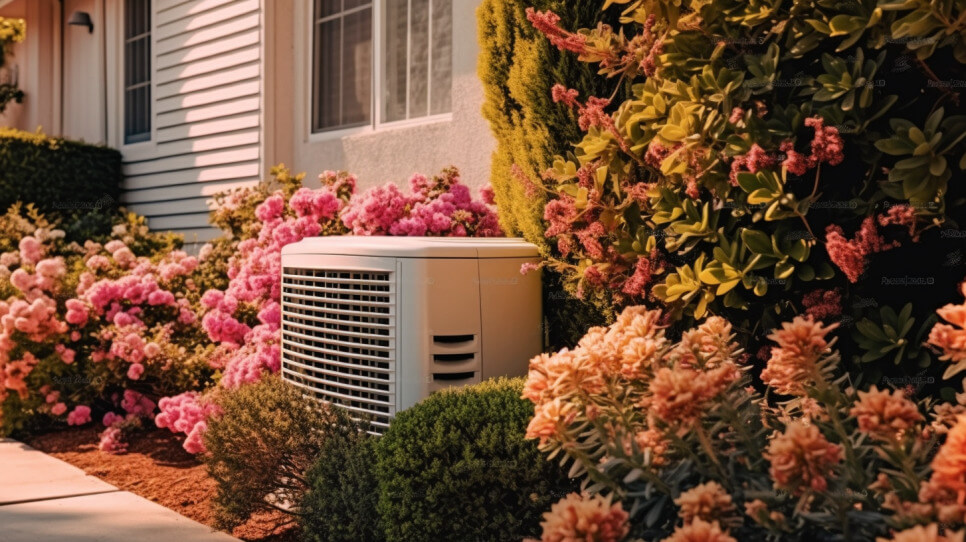Are you doing an HVAC project?
Modernize can pair you with three to four pros in your area, so you can compare options and save time and money.
- What Is SEER Rating?
- What Is a SEER Rating?
- How SEER Ratings Affect Your Energy Bills
- SEER Rating Chart: What Do Different Ratings Mean?
- Choosing the Right SEER Rating for Your Home
- Benefits of Upgrading to a High SEER HVAC System
- Common Myths About SEER Ratings
- SEER Ratings vs. EER Ratings: What’s the Difference?
- Tips for Maintaining Your HVAC System for Optimal SEER Performance
- When to Replace Your HVAC System Based on SEER Rating
- Frequently Asked Questions about SEER Ratings
What Is SEER Rating?
SEER (Seasonal Energy Efficiency Ratio) ratings are crucial when choosing the right HVAC system for your home. Understanding them will help you with two things:
- Determining the energy efficiency of your current heating and cooling units and any replacement units you are considering.
- How your HVAC units’ efficiency will impact your monthly utility bills and overall comfort.
In this guide, we’ll break down what SEER ratings mean, why they matter, and how to select the best HVAC system to suit your needs and budget.

What Is a SEER Rating?
Your HVAC unit’s SEER rating measures the efficiency of an air conditioning or heat pump system. Essentially, it calculates the cooling output of an HVAC unit divided by the total electric energy input over a typical cooling season.
The higher the SEER rating, the more energy-efficient the system is.
How is SEER Calculated?
Here’s the formula used to calculate the SEER rating for HVAC systems:
HVAC systems are tested in a variety of operating conditions in temperatures ranging from 60 to 100 degrees. SEER ratings vary by geographical region since some hot climates — like Florida, Southern Texas, or Arizona — have greater cooling needs than more temperate northern climates.
Why Is SEER Important for Homeowners?
A higher SEER rating can lead to:
- lower energy consumption
- reduced utility bills
- a smaller carbon footprint
How SEER Ratings Affect Your Energy Bills
The SEER rating of an HVAC unit plays a significant role in determining your monthly energy bills. Systems with higher SEER ratings are more efficient, using less electricity to cool or heat your home. For example, upgrading from a unit with a SEER rating of 10 to one with a SEER of 16 can save you up to 30% on cooling costs.

Energy Savings Over Time
The savings from a higher SEER rating compound over time, making the initial investment worthwhile. Homeowners in warmer climates can see even more substantial savings due to increased usage of their air conditioning systems.
SEER Rating Chart: What Do Different Ratings Mean?
To help you understand what SEER ratings mean, here’s a quick breakdown:
Find the Right Contractor for Your HVAC Project
Whether you’re ready to begin your project now or need some expert advice, our network of contractors are here to help. With a few simple questions, we’ll find the best local professionals for you
| SEER Rating | Efficiency | Is This the Right SEER For You? |
|---|---|---|
| 13-15 SEER | Standard efficiency | This rating is commonly found in older units. You will see the most savings by upgrading if this is what you currently have. |
| 16-18 SEER | Mid-range efficiency | Considered fairly efficiency and is suitable for most climates. |
| 19-21 SEER | High efficiency | Great choice for warmer climates where AC sees frequent usage. |
| 22+ SEER | Ultra-high efficiency | Best for maximizing energy savings but comes with a higher upfront cost. |
Choosing the Right SEER Rating for Your Home
Selecting the right SEER rating depends on several factors, including your local climate, the size of your home, and your budget. For example, in hotter regions, a higher SEER rating (18+) can offer substantial savings, while in milder climates, a mid-range SEER (16-18) might suffice.
Consider Your Local Climate
If you live in a region with extreme temperatures, a higher SEER-rated unit can provide both comfort and cost savings. In moderate climates, a lower SEER rating may still offer efficiency without the additional cost.

Benefits of Upgrading to a High SEER HVAC System
Upgrading to an HVAC system with a higher SEER rating offers several benefits:
- Reduced Energy Bills: Lower monthly utility costs due to improved efficiency.
- Environmental Impact: Reduced energy consumption contributes to a smaller carbon footprint.
- Improved Home Comfort: High SEER units often come with advanced features like variable speed motors, providing more consistent temperatures.
Common Myths About SEER Ratings
There are several misconceptions about SEER ratings that can lead to confusion:
- Myth: A higher SEER rating always means better performance.
Truth: While a higher SEER rating indicates better energy efficiency, it doesn’t always mean the unit will perform better in all aspects, such as durability or cooling capacity.
- Myth: A 22 SEER unit will save twice as much as an 11 SEER unit.
Truth: The savings are significant but depend on several factors, including usage patterns, climate, and the overall condition of your home.
SEER Ratings vs. EER Ratings: What’s the Difference?
While SEER measures efficiency over a typical cooling season, EER (Energy Efficiency Ratio) measures efficiency at a specific outdoor temperature (usually 95°F). SEER provides a broader understanding of seasonal efficiency, while EER is more relevant for understanding peak performance during the hottest days.
When to Consider Each Rating?
If you live in a region with consistently high temperatures, both SEER and EER ratings should be considered to ensure optimal performance.
Tips for Maintaining Your HVAC System for Optimal SEER Performance
To maximize the efficiency of your HVAC unit, regular maintenance is essential:
- Change Filters Regularly: A clogged filter reduces airflow and efficiency.
- Schedule Annual Tune-Ups: Professional inspections can identify issues before they affect efficiency.
- Keep Outdoor Units Clear: Remove debris and ensure at least 2 feet of clearance around outdoor units.
When to Replace Your HVAC System Based on SEER Rating
If your current HVAC system has a SEER rating below 13, it may be time to consider an upgrade. Older units typically cost more to run, lack modern features, and may be nearing the end of their lifespan. Upgrading to a unit with a higher SEER rating can provide immediate and long-term cost savings.
Understanding SEER ratings is essential for making an informed decision when purchasing an HVAC system. A higher SEER rating can provide energy savings, improved comfort, and a lower environmental impact. Be sure to evaluate your specific needs, local climate, and budget to select the right unit for your home. For more insights on maintaining and choosing the best HVAC system, explore our related resources.
Frequently Asked Questions about SEER Ratings
Find the Right Contractor for Your HVAC Project
Whether you’re ready to begin your project now or need some expert advice, our network of contractors are here to help. With a few simple questions, we’ll find the best local professionals for you
Reviews from Real Homeowners
Welcome to Homeowner Resources! We are the Modernize blog. Modernize pairs more than 3 million homeowners a year with pre-vetted contractors in their area. This blog started because we believe homeowners should know everything about their homes, from how their HVAC works to which front door colors they might love. On Homeowner Resources, you can find information on every part of your home, right down to how you can negotiate with contractors to get the best price. Here's more about the blog.
Need a contractor? Learn more about how Modernize finds the right pro for you.




